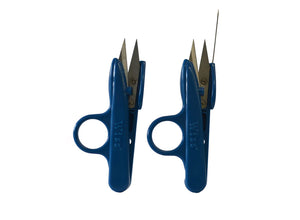Steel Scissors Blade
Understanding Blade Scissors Steel: The Key to Quality and Performance
When it comes to scissors, the material used for the blades is crucial. The type of steel can significantly affect the sharpness, durability, and overall performance of the scissors. In this article, we will explore the various types of blade scissors steel and how they impact your everyday cutting tasks.
Types of Steel Used in Scissors
Stainless Steel
Stainless steel is one of the most popular materials used for blade scissors. Known for its resistance to rust and corrosion, it is ideal for household and professional use. Scissors made from high-quality stainless steel have excellent edge retention, making them a solid choice for durability.
Carbon Steel
Carbon steel is another common material used in blade scissors. Unlike stainless steel, carbon steel tends to be sharper and easier to sharpen. However, it is more susceptible to rust, so it requires proper maintenance. Many professional tailors and craftsmen prefer carbon steel for its cutting performance.
High-Carbon Stainless Steel
High-carbon stainless steel combines the best features of both stainless and carbon steel. It offers excellent resistance to tarnishing and maintains a sharp edge for an extended period. This type of steel is increasingly popular in high-end scissors, providing both durability and performance.
Key Features to Look for in Blade Scissors Steel
Sharpness and Edge Retention
The sharpness of the blade is a critical factor. Quality steel materials allow for finer edges, which can cut through various materials more effectively. Additionally, good edge retention means that the scissors will stay sharp longer, reducing the need for frequent sharpening.
Corrosion Resistance
Depending on the environment in which the scissors are used, corrosion resistance might be a significant factor. Stainless steels typically offer better protection against moisture and chemicals, making them a great choice for kitchen or outdoor use.
Durability
Durability is an essential characteristic of blade scissors steel. High-quality materials can withstand daily wear and tear, providing users with reliable performance over time. Investing in durable scissors can save money in the long run by reducing the need for replacements.
Caring for Your Blade Scissors
Regular Cleaning
To maintain the integrity of the steel, clean your scissors regularly. Remove any sticky residue or debris that accumulates on the blades. Using warm soapy water and a soft cloth is often sufficient. Avoid using abrasive materials that may scratch the surface.
Proper Storage
Store your scissors in a dry place to prevent rust and corrosion. Consider using a protective sheath or a designated scissors case to keep the blades safe.
Sharpening
To ensure your scissors maintain their cutting performance, sharpen them periodically. Use a professional sharpening service or a quality sharpening tool designed for scissors to achieve the best results.
Conclusion
Choosing the right blade scissors steel is essential for achieving optimal cutting performance. Whether you prefer the sharpness of carbon steel or the durability of stainless steel, understanding the differences can help you make an informed decision. By taking care of your scissors, you can ensure they last for years, making every cutting task easier and more enjoyable.























